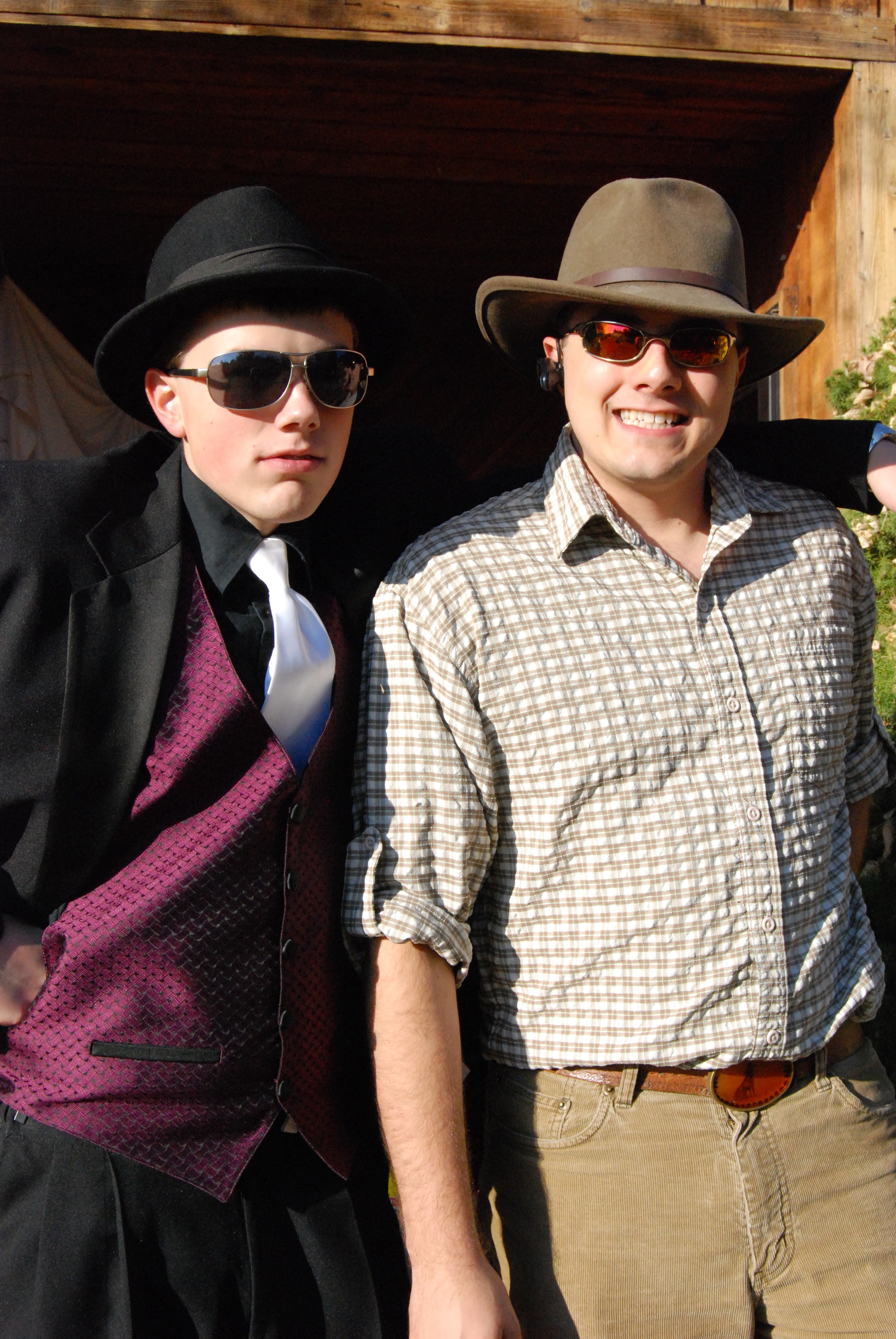What you see in the header is the desert on a very frigid, dark and snowy day. Who knew that desert and snow could go together?
Part Two:
Just before we left, I got this call from Max: “Gram – I’ve got a SURPRISE for you.”
“ooo-ooo-OOO,” I said. “But I’m not going to ask you what it is, ’cause I know you’re dying to tell me.”
“Wellllll,” he said, and I could just see his face all screwed up Max-wise, “it’s something we get to do together.”
And it turned out to be this: science experiments. A whole box of them. “Gram is going to love this,” he told his mother. “We really like to learn together.”
SCORE!!!!
The kid is six years old. When we started the experiments, I made him the reader. Actually, it was his coat carefully fit over his backpack who was the reader. The Max robot. Using Max’s eyes for input, evidently.
I was really interested to see if he could 1) read the instructions and then 2) follow them. And danged if he didn’t do both. There were sticky places, but he not only got through them, he stuck with the whole project. SCORE again!
So we took a medium scoop of baking soda and added a medium scoop of citric acid. So far, all we’ve got is white powder.
But when you add water to a compound made of an acid and a base –
YOU GET FIZZZ!!!! Because the acid and the base react to create CO2. Carbonizing the water.
Then we poured out our water, cleaned the cup, put in some more water and added a small scoop of red cabbage juice powder (which you always have, just lying around the house – like citric acid. Everybody has some of that.) The water is draped with purple streamers. When it’s all mixed up, you have a lovely deep purple liquid.
Red cabbage powder is a cool color medium. When you add a base to it, like baking soda, the solution turns deep blue.
But if you add acid (citric acid here) to water with the cabbage powder in it, you get RED.
Woo-hooo!!
And if you pour a little of each color water together, you get fizzy purple again, because the acid and base balance each other out (plus fizz). Once you have the purple, you can use it to test all kinds of stuff. Like, if you put some toothpaste in a cup and squish it around with water, then add a dropper of the purple water above, then stir – you can tell if the toothpaste is an acid or a base – because the toothpaste water will turn:
BLUE.
a base.
But if you put vinegar in a cup and add the purple water – the vinegar will turn RED. Because vinegar turns out to be ACID.
We ran all over the house finding junk to test – contact solution, perfume, milk, everything.
And if, in the end, you add some scoops of cross-linked polyacetaline (was that how it was spelled? Anyway, the stuff is tiny crystals of super absorbent plastic) to each of the three cups – and you wait a couple of hours – you get these big, brightly colored crystals. The acid crystals will be pink or red depending on how much of the red solution they suck up. And the base ones will be green or blue. The balanced ones stay purple.
We were THRILLED by all of this magic. (Ginger, I sound like you.)
I think that the red was our favorite, though –
YAY for Max the scientist!
And yay for me – because Max and I do love to learn together.
This is the end of day one and part 2.















31 Responses to ~:: Tales of Santa Fe: Pt. 2 ::~